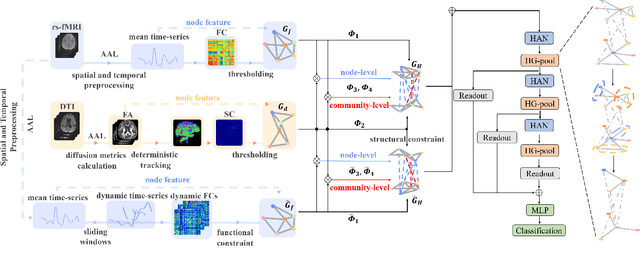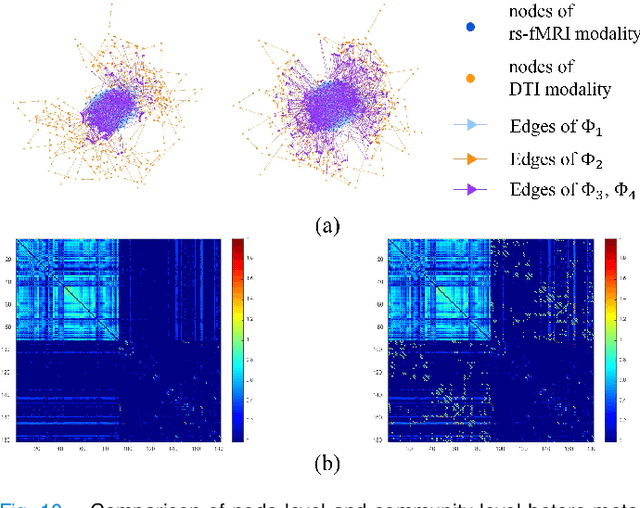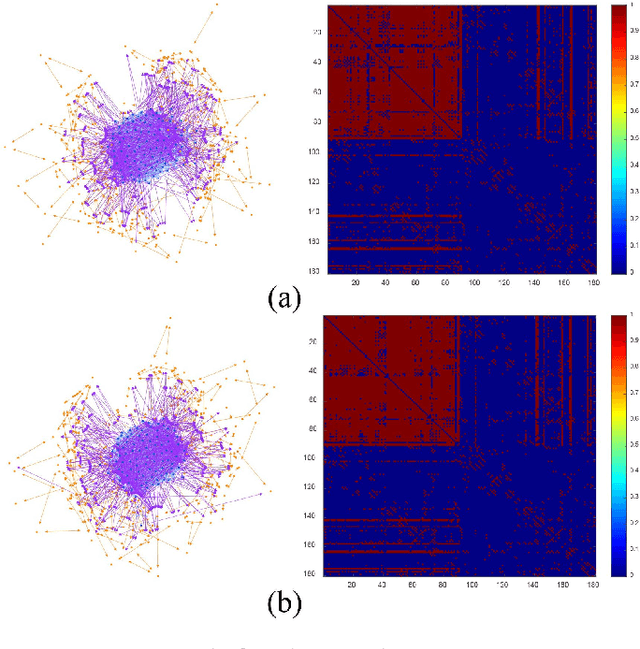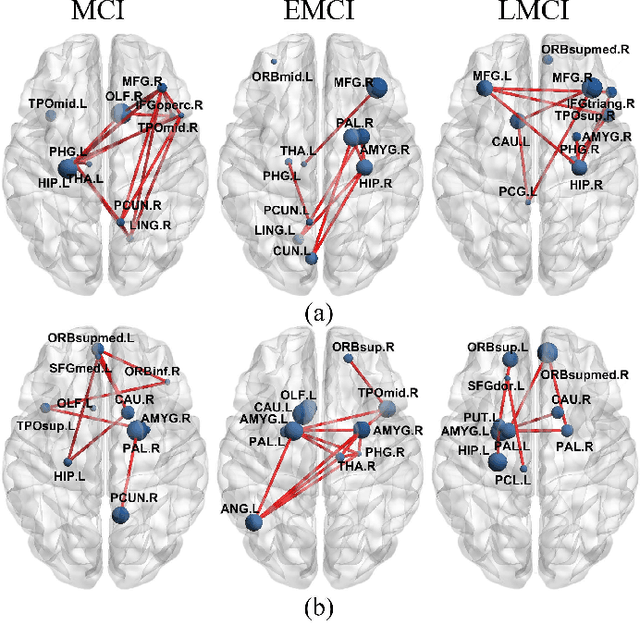Yu Lei
From Masks to Worlds: A Hitchhiker's Guide to World Models
Oct 23, 2025Abstract:This is not a typical survey of world models; it is a guide for those who want to build worlds. We do not aim to catalog every paper that has ever mentioned a ``world model". Instead, we follow one clear road: from early masked models that unified representation learning across modalities, to unified architectures that share a single paradigm, then to interactive generative models that close the action-perception loop, and finally to memory-augmented systems that sustain consistent worlds over time. We bypass loosely related branches to focus on the core: the generative heart, the interactive loop, and the memory system. We show that this is the most promising path towards true world models.
QueryCraft: Transformer-Guided Query Initialization for Enhanced Human-Object Interaction Detection
Aug 12, 2025Abstract:Human-Object Interaction (HOI) detection aims to localize human-object pairs and recognize their interactions in images. Although DETR-based methods have recently emerged as the mainstream framework for HOI detection, they still suffer from a key limitation: Randomly initialized queries lack explicit semantics, leading to suboptimal detection performance. To address this challenge, we propose QueryCraft, a novel plug-and-play HOI detection framework that incorporates semantic priors and guided feature learning through transformer-based query initialization. Central to our approach is \textbf{ACTOR} (\textbf{A}ction-aware \textbf{C}ross-modal \textbf{T}ransf\textbf{OR}mer), a cross-modal Transformer encoder that jointly attends to visual regions and textual prompts to extract action-relevant features. Rather than merely aligning modalities, ACTOR leverages language-guided attention to infer interaction semantics and produce semantically meaningful query representations. To further enhance object-level query quality, we introduce a \textbf{P}erceptual \textbf{D}istilled \textbf{Q}uery \textbf{D}ecoder (\textbf{PDQD}), which distills object category awareness from a pre-trained detector to serve as object query initiation. This dual-branch query initialization enables the model to generate more interpretable and effective queries for HOI detection. Extensive experiments on HICO-Det and V-COCO benchmarks demonstrate that our method achieves state-of-the-art performance and strong generalization. Code will be released upon publication.
Prompt Guidance and Human Proximal Perception for HOT Prediction with Regional Joint Loss
Jul 02, 2025Abstract:The task of Human-Object conTact (HOT) detection involves identifying the specific areas of the human body that are touching objects. Nevertheless, current models are restricted to just one type of image, often leading to too much segmentation in areas with little interaction, and struggling to maintain category consistency within specific regions. To tackle this issue, a HOT framework, termed \textbf{P3HOT}, is proposed, which blends \textbf{P}rompt guidance and human \textbf{P}roximal \textbf{P}erception. To begin with, we utilize a semantic-driven prompt mechanism to direct the network's attention towards the relevant regions based on the correlation between image and text. Then a human proximal perception mechanism is employed to dynamically perceive key depth range around the human, using learnable parameters to effectively eliminate regions where interactions are not expected. Calculating depth resolves the uncertainty of the overlap between humans and objects in a 2D perspective, providing a quasi-3D viewpoint. Moreover, a Regional Joint Loss (RJLoss) has been created as a new loss to inhibit abnormal categories in the same area. A new evaluation metric called ``AD-Acc.'' is introduced to address the shortcomings of existing methods in addressing negative samples. Comprehensive experimental results demonstrate that our approach achieves state-of-the-art performance in four metrics across two benchmark datasets. Specifically, our model achieves an improvement of \textbf{0.7}$\uparrow$, \textbf{2.0}$\uparrow$, \textbf{1.6}$\uparrow$, and \textbf{11.0}$\uparrow$ in SC-Acc., mIoU, wIoU, and AD-Acc. metrics, respectively, on the HOT-Annotated dataset. Code is available at https://github.com/YuxiaoWang-AI/P3HOT.
Context-Adaptive Graph Neural Networks for Next POI Recommendation
Jun 12, 2025Abstract:Next Point-of-Interest (POI) recommendation is a critical task in location-based services, aiming to predict users' next visits based on their check-in histories. While many existing methods leverage Graph Neural Networks (GNNs) to incorporate collaborative information and improve recommendation accuracy, most of them model each type of context using separate graphs, treating different factors in isolation. This limits their ability to model the co-influence of multiple contextual factors on user transitions during message propagation, resulting in suboptimal attention weights and recommendation performance. Furthermore, they often prioritize sequential components as the primary predictor, potentially undermining the semantic and structural information encoded in the POI embeddings learned by GNNs. To address these limitations, we propose a Context-Adaptive Graph Neural Networks (CAGNN) for next POI recommendation, which dynamically adjusts attention weights using edge-specific contextual factors and enables mutual enhancement between graph-based and sequential components. Specifically, CAGNN introduces (1) a context-adaptive attention mechanism that jointly incorporates different types of contextual factors into the attention computation during graph propagation, enabling the model to dynamically capture collaborative and context-dependent transition patterns; (2) a graph-sequential mutual enhancement module, which aligns the outputs of the graph- and sequential-based modules via the KL divergence, enabling mutual enhancement of both components. Experimental results on three real-world datasets demonstrate that CAGNN consistently outperforms state-of-the-art methods. Meanwhile, theoretical guarantees are provided that our context-adaptive attention mechanism improves the expressiveness of POI representations.
Do Large Language Models Think Like the Brain? Sentence-Level Evidence from fMRI and Hierarchical Embeddings
May 28, 2025Abstract:Understanding whether large language models (LLMs) and the human brain converge on similar computational principles remains a fundamental and important question in cognitive neuroscience and AI. Do the brain-like patterns observed in LLMs emerge simply from scaling, or do they reflect deeper alignment with the architecture of human language processing? This study focuses on the sentence-level neural mechanisms of language models, systematically investigating how hierarchical representations in LLMs align with the dynamic neural responses during human sentence comprehension. By comparing hierarchical embeddings from 14 publicly available LLMs with fMRI data collected from participants, who were exposed to a naturalistic narrative story, we constructed sentence-level neural prediction models to precisely identify the model layers most significantly correlated with brain region activations. Results show that improvements in model performance drive the evolution of representational architectures toward brain-like hierarchies, particularly achieving stronger functional and anatomical correspondence at higher semantic abstraction levels.
Weakly Supervised Spatial Implicit Neural Representation Learning for 3D MRI-Ultrasound Deformable Image Registration in HDR Prostate Brachytherapy
Mar 18, 2025



Abstract:Purpose: Accurate 3D MRI-ultrasound (US) deformable registration is critical for real-time guidance in high-dose-rate (HDR) prostate brachytherapy. We present a weakly supervised spatial implicit neural representation (SINR) method to address modality differences and pelvic anatomy challenges. Methods: The framework uses sparse surface supervision from MRI/US segmentations instead of dense intensity matching. SINR models deformations as continuous spatial functions, with patient-specific surface priors guiding a stationary velocity field for biologically plausible deformations. Validation included 20 public Prostate-MRI-US-Biopsy cases and 10 institutional HDR cases, evaluated via Dice similarity coefficient (DSC), mean surface distance (MSD), and 95% Hausdorff distance (HD95). Results: The proposed method achieved robust registration. For the public dataset, prostate DSC was $0.93 \pm 0.05$, MSD $0.87 \pm 0.10$ mm, and HD95 $1.58 \pm 0.37$ mm. For the institutional dataset, prostate CTV achieved DSC $0.88 \pm 0.09$, MSD $1.21 \pm 0.38$ mm, and HD95 $2.09 \pm 1.48$ mm. Bladder and rectum performance was lower due to ultrasound's limited field of view. Visual assessments confirmed accurate alignment with minimal discrepancies. Conclusion: This study introduces a novel weakly supervised SINR-based approach for 3D MRI-US deformable registration. By leveraging sparse surface supervision and spatial priors, it achieves accurate, robust, and computationally efficient registration, enhancing real-time image guidance in HDR prostate brachytherapy and improving treatment precision.
ZiGong 1.0: A Large Language Model for Financial Credit
Feb 22, 2025Abstract:Large Language Models (LLMs) have demonstrated strong performance across various general Natural Language Processing (NLP) tasks. However, their effectiveness in financial credit assessment applications remains suboptimal, primarily due to the specialized financial expertise required for these tasks. To address this limitation, we propose ZiGong, a Mistral-based model enhanced through multi-task supervised fine-tuning. To specifically combat model hallucination in financial contexts, we introduce a novel data pruning methodology. Our approach utilizes a proxy model to score training samples, subsequently combining filtered data with original datasets for model training. This data refinement strategy effectively reduces hallucinations in LLMs while maintaining reliability in downstream financial applications. Experimental results show our method significantly enhances model robustness and prediction accuracy in real-world financial scenarios.
Correcting Large Language Model Behavior via Influence Function
Dec 21, 2024Abstract:Recent advancements in AI alignment techniques have significantly improved the alignment of large language models (LLMs) with static human preferences. However, the dynamic nature of human preferences can render some prior training data outdated or even erroneous, ultimately causing LLMs to deviate from contemporary human preferences and societal norms. Existing methodologies, whether they involve the curation of new data for continual alignment or the manual correction of outdated data for re-alignment, demand costly human resources. To address this challenge, we propose a novel approach, Large Language Model Behavior Correction with Influence Function Recall and Post-Training (LANCET), which requires no human involvement. LANCET consists of two phases: (1) using influence functions to identify the training data that significantly impact undesirable model outputs, and (2) applying an Influence function-driven Bregman Optimization (IBO) technique to adjust the model's behavior based on these influence distributions. Our experiments demonstrate that LANCET effectively and efficiently correct inappropriate behaviors of LLMs. Furthermore, LANCET can outperform methods that rely on collecting human preferences, and it enhances the interpretability of learning human preferences within LLMs.
Precision-Enhanced Human-Object Contact Detection via Depth-Aware Perspective Interaction and Object Texture Restoration
Dec 13, 2024



Abstract:Human-object contact (HOT) is designed to accurately identify the areas where humans and objects come into contact. Current methods frequently fail to account for scenarios where objects are frequently blocking the view, resulting in inaccurate identification of contact areas. To tackle this problem, we suggest using a perspective interaction HOT detector called PIHOT, which utilizes a depth map generation model to offer depth information of humans and objects related to the camera, thereby preventing false interaction detection. Furthermore, we use mask dilatation and object restoration techniques to restore the texture details in covered areas, improve the boundaries between objects, and enhance the perception of humans interacting with objects. Moreover, a spatial awareness perception is intended to concentrate on the characteristic features close to the points of contact. The experimental results show that the PIHOT algorithm achieves state-of-the-art performance on three benchmark datasets for HOT detection tasks. Compared to the most recent DHOT, our method enjoys an average improvement of 13%, 27.5%, 16%, and 18.5% on SC-Acc., C-Acc., mIoU, and wIoU metrics, respectively.
A Heterogeneous Graph Neural Network Fusing Functional and Structural Connectivity for MCI Diagnosis
Nov 13, 2024



Abstract:Brain connectivity alternations associated with brain disorders have been widely reported in resting-state functional imaging (rs-fMRI) and diffusion tensor imaging (DTI). While many dual-modal fusion methods based on graph neural networks (GNNs) have been proposed, they generally follow homogenous fusion ways ignoring rich heterogeneity of dual-modal information. To address this issue, we propose a novel method that integrates functional and structural connectivity based on heterogeneous graph neural networks (HGNNs) to better leverage the rich heterogeneity in dual-modal images. We firstly use blood oxygen level dependency and whiter matter structure information provided by rs-fMRI and DTI to establish homo-meta-path, capturing node relationships within the same modality. At the same time, we propose to establish hetero-meta-path based on structure-function coupling and brain community searching to capture relations among cross-modal nodes. Secondly, we further introduce a heterogeneous graph pooling strategy that automatically balances homo- and hetero-meta-path, effectively leveraging heterogeneous information and preventing feature confusion after pooling. Thirdly, based on the flexibility of heterogeneous graphs, we propose a heterogeneous graph data augmentation approach that can conveniently address the sample imbalance issue commonly seen in clinical diagnosis. We evaluate our method on ADNI-3 dataset for mild cognitive impairment (MCI) diagnosis. Experimental results indicate the proposed method is effective and superior to other algorithms, with a mean classification accuracy of 93.3%.
 Add to Chrome
Add to Chrome Add to Firefox
Add to Firefox Add to Edge
Add to Edge